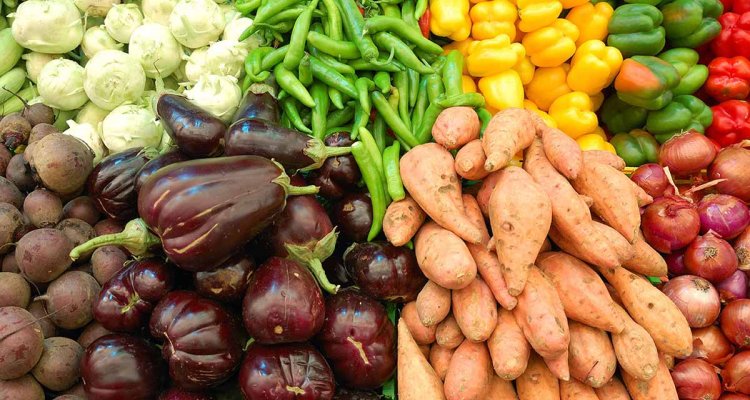
Indicators for food security & resilience to climate change
Food security is defined (by FAO) as a situation in which “all people, at all times, have physical and economic access to sufficient, safe and nutritious food to meet their dietary needs and food preferences for an active and healthy life”.
Food security is comprised of four key dimensions:
Availability
Accessibility
Utilisation
Stability
5 indicators to measure food security of cities
Based on these four dimensions we have created 5 indicators to measure the food security of cities, constrained by the sparse worldwide data for cities:

1. Availability: Food production around the city
This dimension consists of the potential area for fresh food (situated very close to the cities), area for other vegetables, fruit and nuts, and all remaining agricultural land for arable production (further away from the cities). The potential areas for fresh food and for vegetables and fruit are also assumed to be produced on existing cropland, so arable land could be converted to land for vegetables. The supply from these areas are compared with the demand (“Food Metres””, i.e. the area in hectares required to meet the demand for 1000 people): cities that meet the demand better have a higher score for availability.
2. Accessibility: proxy for logistics
The accessibility of food is better when the travel time to the city is low, when the country has a good score for “Ease of doing business” (data from Worldbank), for a stable country (“Fragile State Index”, www.fundforpeace.org) and a high percentage of urban population. Travel time, which is a measure of logistic, is considered as the most important indicator.
3. Accessibility: Affordability
High GDP and GDP development lead to a high value for this dimension. Other contributing indicators are economic activity (derived from the worldwide “Nightlight” map from NASA) and income equality (Gini coefficient).
4. Utilisation: Healthy lifestyle
The consumption of healthy food and a healthy lifestyle are considered to lead to lower food risk in a situation when there is enough food. This dimension consists of the indicators healthy body mass index (BMI) (i.e. not too high, not too low), enough possibilities for urban recreation in e.g. woods (exercise and a green living environment), a total daily kcal intake that is neither too high nor too low, and relative much kcal from meat and fish, vegetables, low child stunting and good sanitation and hygiene.
5. Stability: Food risks
Low food risk is assumed when the population increase of the city is low, the city lies in a suitable climate (not too low/high temperature and precipitation) with low climate risk, having a low risk of flood, and not too low BMI or total kcalintake. The risk of flood is higher when the city lies near the sea or a river in combination with high precipitation; especially when many people live at low altitude.
Index for food security risks and oppertunities
The 5 dimensions are combined (with equal weight) leading to an index for food security risks and opportunities. In cities with a very high score, in general the food is available, accessible and affordable. People have a healthy consumption and there are low food risks.
The scores of the dimensions and the index are converted to 9 percentile classes with rates 1 to 9, resulting in a mean of about 5 for each dimension for the whole world. A class value higher than 5 means a better position with respect to food security (best is 9), below 5 a worse one.